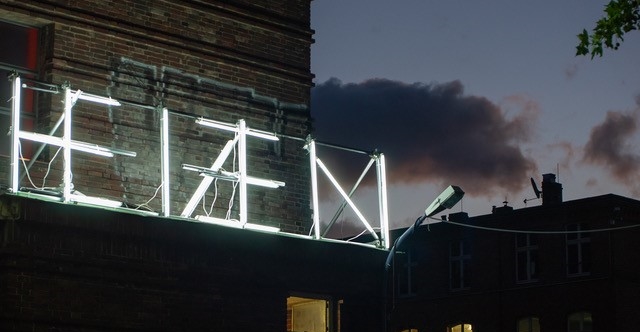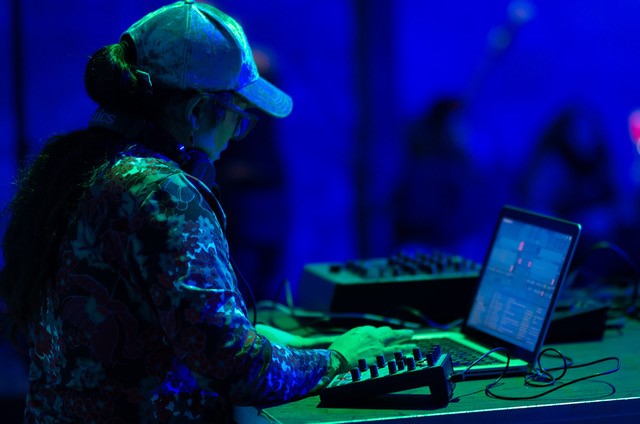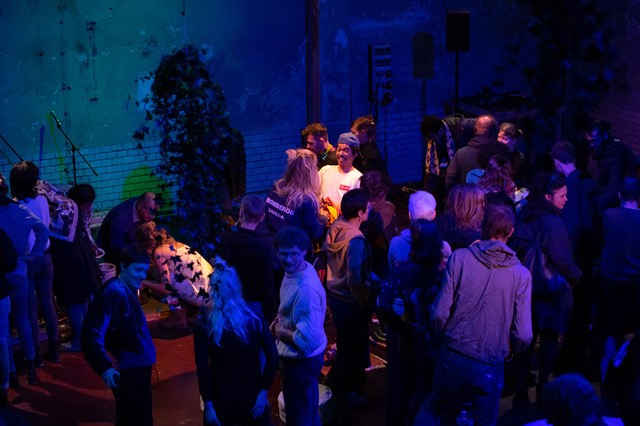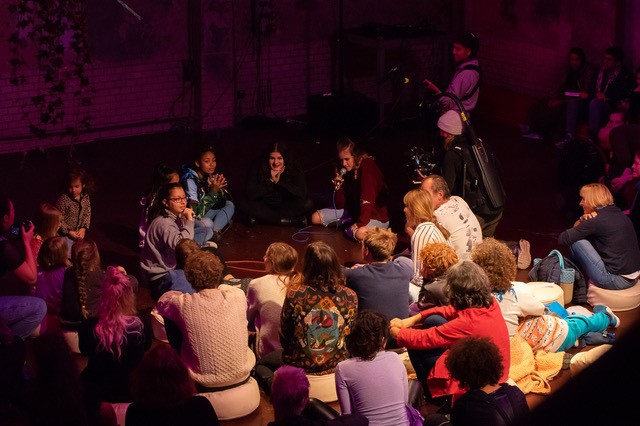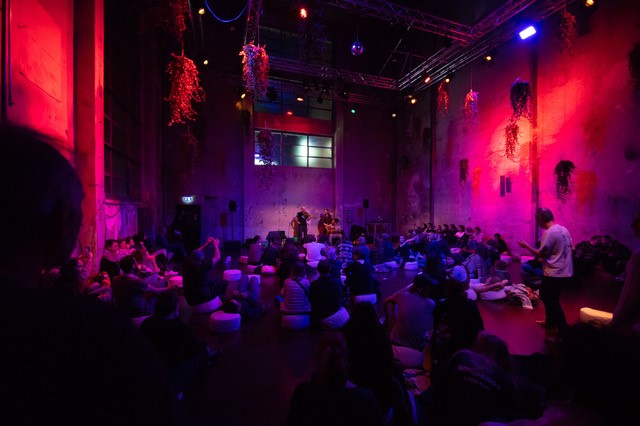At the close of the three-month AUSUFERN festival in Uferstudios in Wedding, the adjoining Heizhaus was inaugurated with a 25-hour performance series. It is set to become a space for process-oriented artistic encounters involving urban society.
The fourth edition of the AUSUFERN festival served as a pre-announcement of a fresh start for Uferstudios and its neighborhood. Unlike the past few years where the festival spread across the different Uferstudios rooms, this time around all the artists focused on the Heizhaus and its unique architecture. With works by Jule Flierl, Göksu Kunak & Laure M. Hiendl, Yvon Chabrowski, and Felix M. Ott, the former power plant was home to a movement choir, a performance and musical theater piece, a video installation, and a “symphony of construction” for three months. The choreographer Felix M. Ott was to some extent involved in the Heizhaus construction process collecting raw materials for his piece. This time around the festival was envisioned as a warm up for the Heizhaus. From now on, the rooms will house artists with highly diverse approaches and aesthetic directions who need a certain amount of residency time for their choreographic work.
The Heizhaus will be a work site along the lines of a residency free from production stress. Many disciplines and formats work well in the Heizhaus. From music to installation. According to Simone Willeit, one of Uferstudios’ two executive managers, these should ideally be pieces that deal with both the location and its architecture and are also aimed at opening the Uferstudios up to the neighborhood and urban society. “We don’t yet know how exactly this will work. That’s a luxury, but also a risk. There’s a certain suspense as to what will ultimately happen when you work processually.”
Curiosity about uncertain artistic and social processes and unplanned encounters was also the unifying element during the opening last Saturday. The 25-hour performance created a microcosm symbolic of Heizhaus’ future as a space for processes. People came and went and were part of different situative settings. It began with a collective dance with Bella Hager and Lea Martini. This was followed by a head massage ritual with Modjgan Hashemian (in collaboration with Kaveh Ghaemi and Grupo Oito, accompanied by live music.) The event included tasting leftovers with Pepe Dayaw, rapping against racism and sexism with the girls from MÄDEA/Foundation SPI, an imaginary artist talk conducted with martial artists from Aikido Dojo at Gleisdreick, training, meditating, dancing, and also doing nothing. The Heizhaus was warmed up once again with a fire ritual late at night. Heat as an element took on a double meaning: the warming up of this building with its massive eye-catching chimney as a space for artistic experimentation and the warming up of the neighborhood. “Not always promoting one’s own conceptual thinking, but looking at what is actually already available.” That is how Willeit explains the connection to this neighborhood and others. “What’s there to argue about, what’s there to discuss, where can we collaborate with initiatives that might not be so obvious to us a contemporary dance space?” These questions keep her busy, and the answers require time and mutual trust, but also friction. It’s important to emphasize that this cooperation is not envisioned as “giving” or “taking” in the neighborhood, but rather as a mutual thought process. It was precisely this approach underling the diversity of the opening program curated by the artistic collective PSR (Performance Situation Room). PSR was informally convened to create a general performance concept for the Heizhaus, and it invited other artists. This concept is also the future of the Heizhaus: one place, run by artists, and operating via invitation and chain curation, even if the necessary financial means is lacking. Challenges and experiments are a matter of course at Heizhaus.
For Barbara Friedrich, who is an executive manager of Uferstudios with Simone Willeit, the construction was the biggest challenge of the entire process. Uferstudios jointly inherited the Heizhaus in 2012. Thereafter, it was sporadically used as an event location e.g. for formats by apparatus, for concerts, but generally as an interim space since the technical equipment didn’t work. The renovation of the Heizhaus is an elaborate process, one that has been going on for over a year and will probably continue until the end of this year. There were no windows, each individual steel frame was repaired, the floor renovated. With its 170 square-meter surface area and its 11 meter ceilings, the space has very specific requirements. It is difficult to heat, especially considering that heated floors are not an option for performers. However, the coinciding of events and construction was not just filled with challenges. According to Friedrich, there’s lots of room to improvise. “I’m always a fan of interim use during construction because it provides information, insight,” says Friedrich, who will retire once the construction is complete.
Heizhaus is growing before and with its audience’s eyes. The audience is hardly a passive body in this resonance chamber. Instead it is to some extent involved in the preliminary planning for its conception. How do people interact with one another in this space? Physically and mentally? What ambient situations does this kind of with each other and against each other create? “That is the choreography of it all – without a dance performance or a product,” says Willeit. “Social choreography is an older term that should constantly be re-adapted. We tried to find a discursive space without putting a label on it.” The endeavor will continue in November with “FERMENT:MUTTERKORN” by apparatus.
Alle Fotos © Thore Rehbach
Englische Übersetzung von Melissa Maldenado

